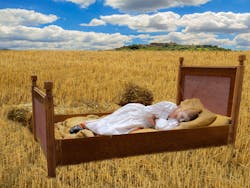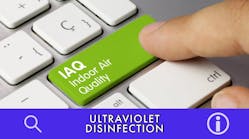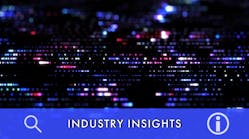DOE backs study looking at lighting’s effect on health and sleep
Thomas Jefferson University is at it again studying the relationship of lighting to sleep, and among the notable aspects of its latest upcoming research project is the funding source, as it is drawing money from the US Department of Energy (DOE).
Yes, from the DOE. In the unlikely event you need reminding, that’s that agency concerned primarily with, whadya know, the country’s use of energy (including the energy of nuclear weapons, but that’s another story).
From the DOE’s website: “The mission of the Energy Department is to ensure America’s security and prosperity by addressing its energy, environmental and nuclear challenges through transformative science and technology solutions.”
As such, when it comes to lighting, you might well expect the DOE to fund the development of more efficient LEDs, of smarter control systems that cut down on electricity use, of optics that improve lumens per watt output, and so forth. Indeed, the department has backed many such projects.
But Philadelphia-based Thomas Jefferson will not be looking at energy efficiency per se. Rather, it will examine lighting’s impact on health and sleep, in a two-part, three-year project in partnership with Tulane University School of Medicine and backed by $1.6 million from the DOE.
There is, of course, a connection to energy and energy consumption. The researchers will be comparing sleep-related effects of conventional fluorescent lighting with more energy-efficient LED lighting, which also happens to be tunable.
That tunability, when dialing up blue-rich wavelengths during the day, benefited the health and sleep of mice in an earlier Tulane study. Now, the Thomas Jefferson and Tulane team will examine whether humans would gain similar advantages.
“Compelling research in mice has shown that the kind of day-time lighting — fluorescent or tunable LED light — can have a significant impact on health,” said lead researcher John Hanifin, assistant professor of Neurology at Thomas Jefferson University and its related Vickie and Jack Farber Institute for Neuroscience. “We want to test whether that’s the case in people too, and whether tunable LED can improve measures of sleep, metabolism, and overall health.”
Thomas Jefferson collaborated on the Tulane study, which showed that “mice living under LED lighting that is richer in blue wavelengths compared to those raised under typical fluorescent light had significant beneficial impacts on their physiology and overall health,” Thomas Jefferson said in announcing the new study.
“Daytime LED lighting that is richer in blue wavelengths and more similar to the color spectrum found in natural daylight may provide health benefits to those working or living in that light environment,” the university said.
In the study’s first part, participants will live around the clock in Jefferson’s Light Research Lab for a week under fluorescent lights through the day and into the evening until bedtime. The lab has workspaces and beds. The participants will return at a later date for a weeklong stay under bright LEDs tuned to a high blue quotient during the day, and dimmed and tuned to a blue-depleted spectrum at night until bedtime. Researchers will observe differences in health status and sleep, and will measure hormones, metabolic biomarkers, and aspects of sleep physiology using a wearable device that tracks movement.
Part two examines conditions that George Brainard, director of Jefferson’s Light Research Program, called more “real life.” Participants will not live in the lab. Rather, one group will spend the day working under brighter and blue-enriched LED lighting, while another will work under fluorescent lighting. They will return home in the evening.
Researchers from the Tulane Center for Circadian Biology at Tulane’s medical school will analyze participants’ blood for biomarkers, including glucose, insulin, leptin, cortisol, and melatonin.
Jefferson hopes to have 12 participants in the first part, and 28 in the second, Hanifin told LEDs Magazine. The start date has not yet been set.
Thomas Jefferson, a medical research university, has a long background in light-related sleep and health research, including work for the International Space Station.
They and others have been examining the link between human health with aspects of lighting such as light levels and spectra.
The study marks a reciprocal twist to the energy efficiency reminder issued by Signify CEO Eric Rondolat recently. LEDs’ energy-efficiency story has been so long established that it can be overlooked these days, one reason being that other potential LED benefits, such as circadian health and connectivity with the Internet of Things (IoT), have stepped into the spotlight.
This is not the first time the DOE has funded lighting-related health work. It backed a study on the health effects of tunable lighting at the 99-bed ACC Care Center senior nursing home in Sacramento, for instance. In another example, in 2017 it provided $653,625 to the University of California San Diego to examine the physiological effect of lighting on shift workers.
While the new study focuses on sleep and health, energy efficiency is also on its radar. The Lighting Enabled Systems and Application (LESA) Center at Rensselaer Polytechnic Institute (RPI) will design and install the lighting system throughout the lab, and will measure the associated energy costs. Saratoga, CA-based Telelumen LLC is providing the programmable lights.
MARK HALPER is a contributing editor for LEDs Magazine, and an energy, technology, and business journalist ([email protected]).
For up-to-the-minute LED and SSL updates, why not follow us on Twitter? You’ll find curated content and commentary, as well as information on industry events, webcasts, and surveys on our LinkedIn Company Page and our Facebook page.

Mark Halper | Contributing Editor, LEDs Magazine, and Business/Energy/Technology Journalist
Mark Halper is a freelance business, technology, and science journalist who covers everything from media moguls to subatomic particles. Halper has written from locations around the world for TIME Magazine, Fortune, Forbes, the New York Times, the Financial Times, the Guardian, CBS, Wired, and many others. A US citizen living in Britain, he cut his journalism teeth cutting and pasting copy for an English-language daily newspaper in Mexico City. Halper has a BA in history from Cornell University.


![The DesignLights Consortium continues to make progress in shifting outdoor lighting products and implementation practices toward a more restrained and thoughtful strategy. [Image does not represent a DLC qualified fixture.] The DesignLights Consortium continues to make progress in shifting outdoor lighting products and implementation practices toward a more restrained and thoughtful strategy. [Image does not represent a DLC qualified fixture.]](https://img.ledsmagazine.com/files/base/ebm/leds/image/2024/08/66be810888ae93f656446f61-dreamstime_m_265700653.png?auto=format,compress&fit=&q=45&h=139&height=139&w=250&width=250)


